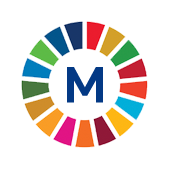 16.9.1 Birth registration, by ageMetadataPeriod: Every four yearsYear: 2025 |
 16.9.1 Birth registration, by ageMetadataPeriod: Every four yearsYear: 2025 |
| METADATA |
| Indicator information |
| Definition and methodology |
| Data source type and data collection method |
| Notes |
| ID of global indicator |
| Metadata update |
| Global metadata |
| Indicator information | Top |
| Indicator | |
16.9.1 Birth registration, by age | |
| Global indicator name | |
16.9.1 Proportion of children under 5 years of age whose births have been registered with a civil authority, by age | |
| Target | |
16.9 By 2030, provide legal identity for all, including birth registration | |
| Goal | |
Goal 16. Promote peaceful and inclusive societies for sustainable development, provide access to justice for all and build effective, accountable and inclusive institutions at all levels | |
| Definition and methodology | Top |
| Definition | |
Percentage of children less than five years of age that were registered at the moment of the survey. The numerator of this indicator includes children whose birth certificate was seen by the interviewer or whose mother or caretaker says the birth has been registered. MICS data refers to the children alive at the time of the survey. | |
| Methodological explanations | |
Multiple Indicator Cluster Survey (MICS) is a global research programme developed by UNICEF through consultations with other United Nations agencies. MICS is designed to provide statistically sound and internationally comparable data for key social indicators and it is targeted at the most sensitive part of the population: women, children and vulnerable and marginalized population groups. The results of this survey are one of the most important databases, and for many indicators related to health, development and education of children, youth and women, MICS is the only source of data. For more information on Monitoring the Situation of Children and Women and global MICS programme please visit https://mics.unicef.org.
MICS Serbia is a nationally representative sample survey of households, women and children, conducted on the whole territory of Serbia (excluding Kosovo and Metohija). As a separate sample the surveys covered households in Roma settlements. The following instruments are used in the survey: Household Questionnaire, Questionnaire for women aged 15 to 49, Questionnaire for children under five, Questionnaire for recording vaccinations in a health facility and Questionnaire for children aged 5 to 17 years.
MICS publications and survey archives are on https://www.stat.gov.rs/en-US/istrazivanja/mics. Surveys archives contain final reports, databases, programs for indicator calculation, sample information and more.
Observation unit is children under 5 years of age. The indicator is calculated based on information obtained from the module REGISTRATION OF BIRTHS, from the Questionnaire for children under 5. | |
| Method of calculation | |
Number of children less than five years of age that were registered at the moment of the survey (whose birth certificate was seen by the interviewer or whose mother or caretaker says the birth has been registered) is divided by overall number of children aged 0-59 months and multiplied by 100.
Observation unit are children aged 0-59 months. | |
| Unit of measure | |
% | |
| Available disaggregation | |
Age groups | |
| Territorial level | |
Republic of Serbia | |
| Data source type and data collection method | Top |
| Data source | |
Multiple Indicator Cluster Survey (MICS) | |
| Periodicity of data collection | |
Every four years | |
| Notes | Top |
Starting from 1999, the Statistical Office of the Republic of Serbia has not at disposal and may not provide available certain data relative to AP Kosovo and Metohija, and therefore these data are not included in the coverage for the Republic of Serbia (total). | |
| ID of global indicator | Top |
C160901 | |
| Metadata update | Top |
| 29/5/2025 | |
| Global metadata | Top |
https://unstats.un.org/sdgs/metadata/files/Metadata-16-09-01.pdf | |